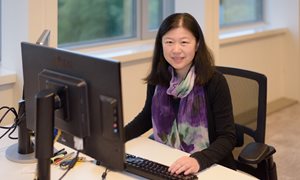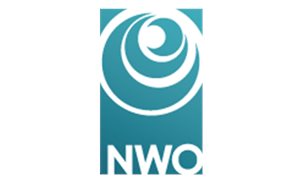 My name is X. Frank Walboomers; my friends call me “Dr. X.”. I am Dutch, and appointed as an Associate Professor (UHD) at the department of Dentistry, within the Biomaterials research group. I participate in the theme Reconstructive and regenerative medicine.
My name is X. Frank Walboomers; my friends call me “Dr. X.”. I am Dutch, and appointed as an Associate Professor (UHD) at the department of Dentistry, within the Biomaterials research group. I participate in the theme Reconstructive and regenerative medicine.
When you were a kid what did you want to be when you grew up? Can you tell us something about your child years.
I grew up literally one minute walk from the woods. As a kid I always was attracted to the natural and exact sciences, and initially wanted to be a marine biologist. But -probably since I get seasick easily- I later settled for general biology…. I also aspired to be a jazz guitarist, but with equally futile result.
What was your previous academic training, where did you study and why that study?
I am a local boy, as I studied Biology here in Nijmegen. I opted for the medical profile with internships focusing around cell biology and physiology, because I developed an interest in human health throughout the study.
The RIMLS motto is: ‘Today’s molecules for tomorrow’s medicine’. What does this mean for you?
I am mostly interested in applied science. Of course the applied sciences would not exist without fundamental knowledge, and vice versa. Still, in the setting of an academic hospital, I would preferentially direct my research to molecules and devices, which can be translated into practical applications to benefit the quality of care for patients. And in such perspective, tomorrow to me personally means at the shorter time frame, rather than somewhere on the long run.
Who is your great example as scientists? And please give a motivation why.
Last year I visited the birth house of Leonardo in Anchiano, Italy. It is astonishing how much his inventions, art, engineering and anatomy are intertwined. So I am convinced (at that time as well as currently) great research is not only based on diligent work, but foremost is originating from someone’s imagination and creativity.
Which research discovery that you have made has made you most proud?
In 2007 I published on the interaction between cells and structural surface cues down to just 35 nanometer [Loesberg ea, Biomaterials 28, p3944]. I think this was an early effort in Nanomedicine that was very rewarding and still raises a lot of citations in the field. Practically, we wanted to use such surfaces to enhance integration of implants into tissue.
Given unlimited finance what experiment would you perform?
Would these finances would come with unlimited time as well ? As mentioned, I would focus on turning the current wealth of knowledge into practical applications; as translation is an elaborate and probably the most costly part of medical research.
What does your working area (desk, office) look like and what does it say about you (or your research)?
Our department has a fantastic new building and lab. The entire work environment is designed as flex space, meaning that your area should be tidy after you leave.... Honestly, I still have too much persistent rubbish on my desk though....
Nominate a colleague to be in the spotlight and what would you like to ask him or her?
I would like to ask prof. Ronald Bartels’ opinion on achieving true regeneration in complicated spinal defects, as quality of life would improve so drastically.
What type of person are you, quick insights:
a) Mac or PC? : PC although I wish the clients would more easily support research-oriented applicationsb) Theater or cinema? : Cinema, as I live next door to the LUX
c) Dine out or dine in? : I love to cook but prefer to dine out and be (pleasantly) surprised
d) Ferrari or Fiat? : Mercedes CLS
e) Shopaholic or chocoholic? : Chocolate
f) Culture or Nature : Culture
Related news items

A tunable and injectable local drug delivery system for personalized periodontal application
11 May 2020 In Journal of Controlled Release, Fang Yang and colleagues, have designed and formulated a local delivery system by loading the PLGA-drug microspheres into PIC hydrogel. This system exhibited appropriate injectability, long-term structural stability, and no obvious in vivo inflammatory response. go to page
Three Vici grants for Radboudumc researchers
20 February 2020 Christian Beckmann, Sander Leeuwenburgh and Annette Schenck each receive a 1.5 million euro Vici research grant from NWO. go to page
A personal touch of Sander Leeuwenburgh
21 November 2019 In order to promote interaction amongst colleagues within RIMLS, we have a ‘personal touch’ series setting employees in the spotlight. A light-hearted manner to learn about the colleagues you know and those you don’t. This week: Sander Leeuwenburgh. go to page
A personal touch of Frank Wagener
10 October 2019 In order to promote interaction amongst colleagues within RIMLS, we have a ‘personal touch’ series setting employees in the spotlight. A light-hearted manner to learn about the colleagues you know and those you don’t. This week: Frank Wagener. go to page
NWO grant to develop new biomaterials for improved regeneration of bone defects
20 August 2019 Sander Leeuwenburgh, theme Reconstructive and regenerative medicine, and Roland Brock, theme Nanomedicine, were recently awarded with a grant of 581 k€ by NWO, domain Applied & Engineering Sciences, to develop new biomaterials for improved regeneration of bone defects. go to page
